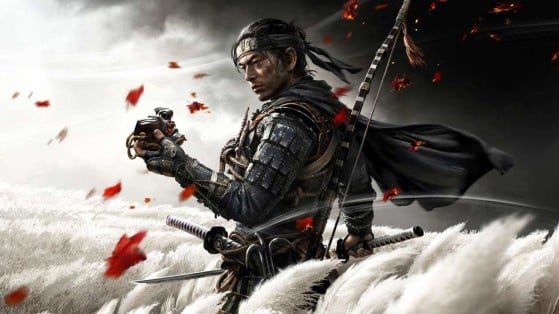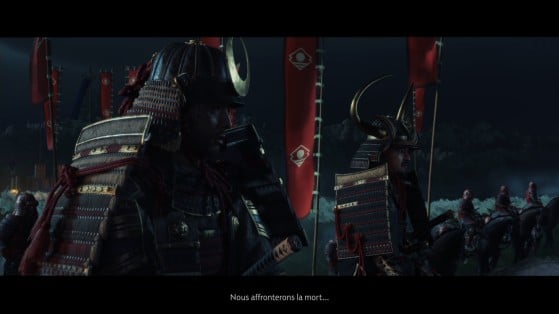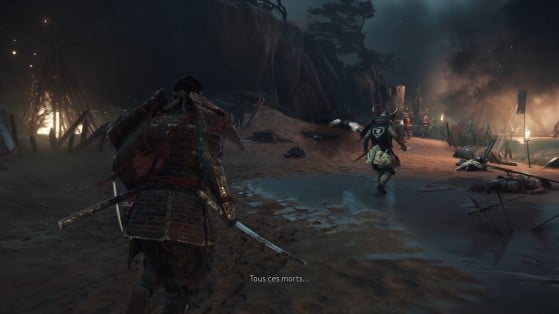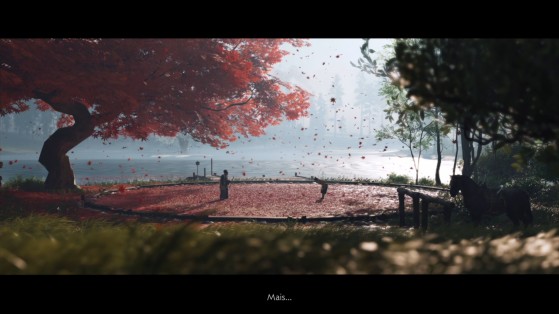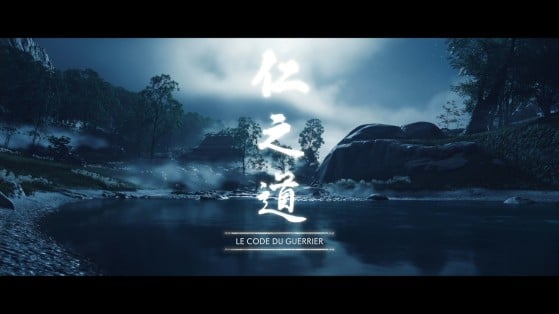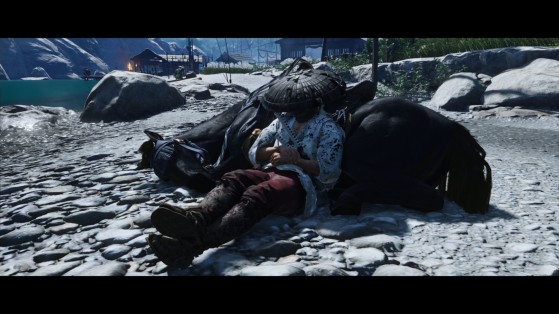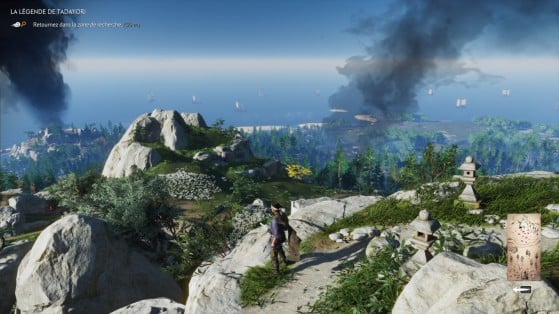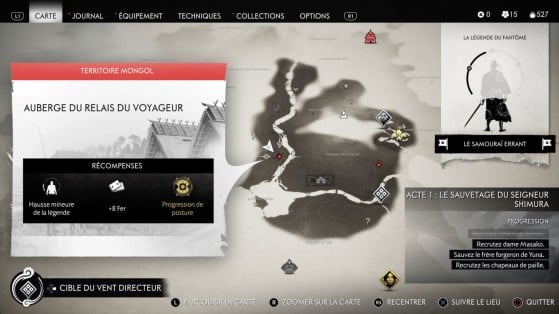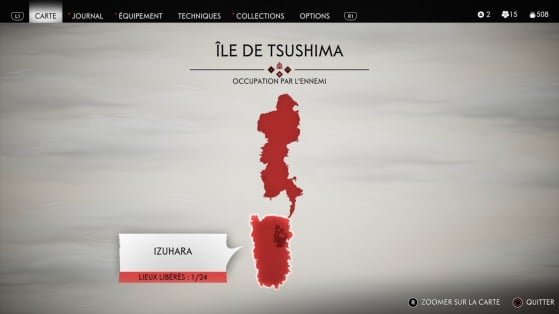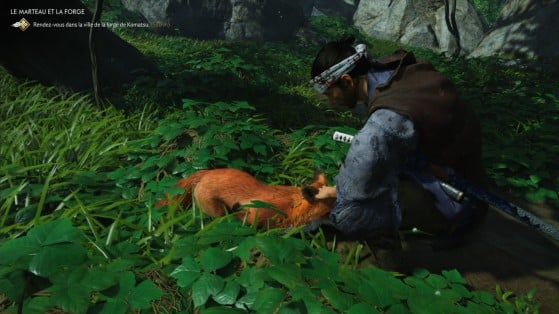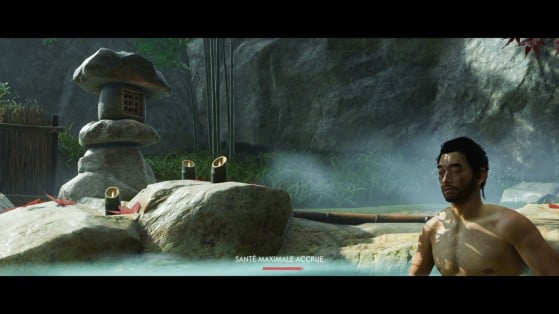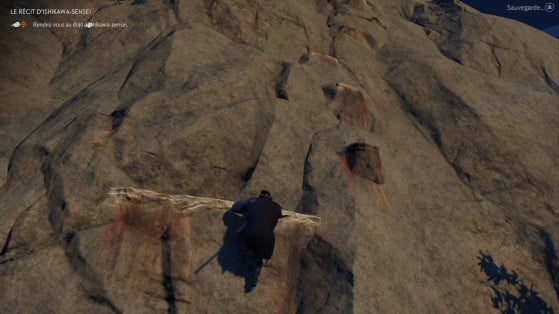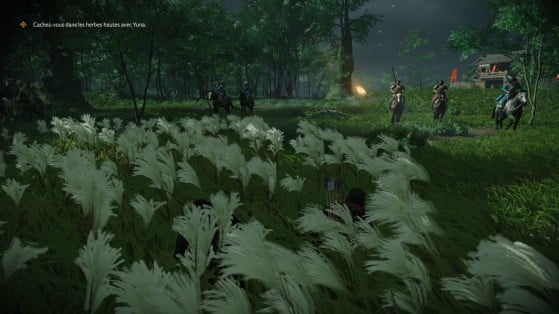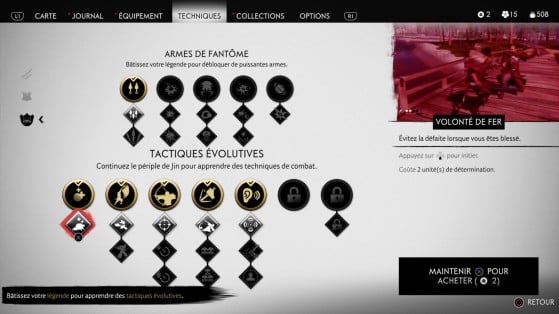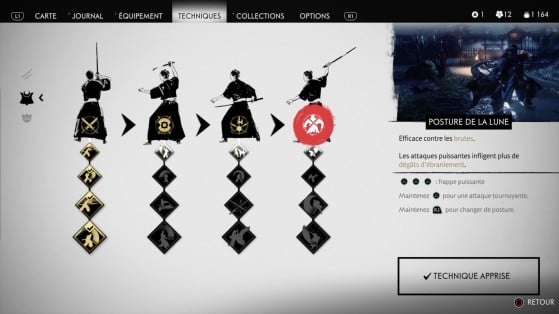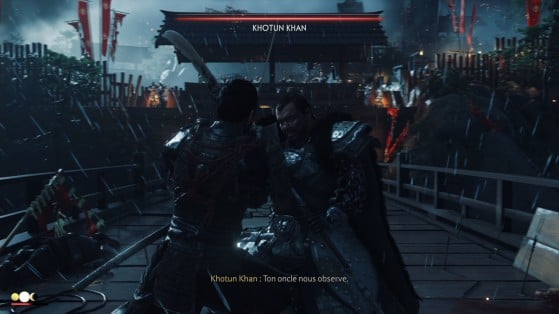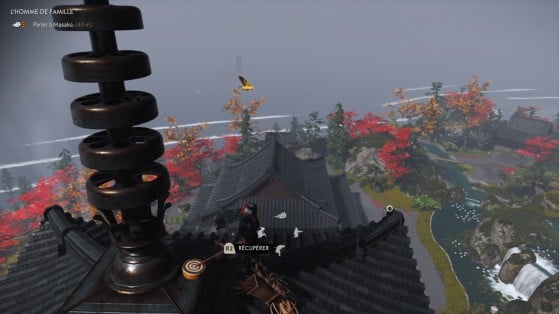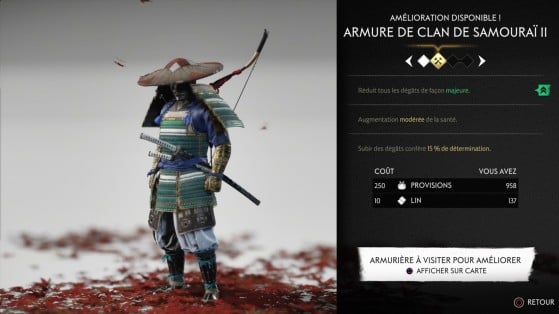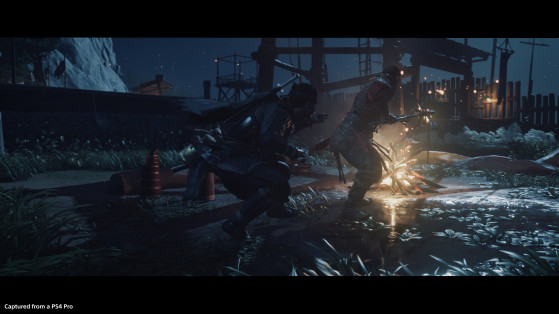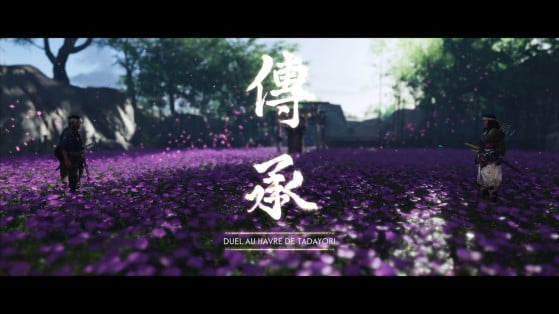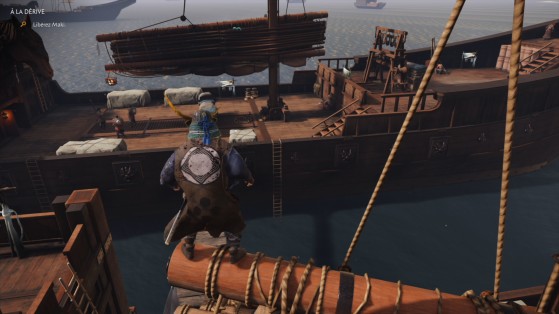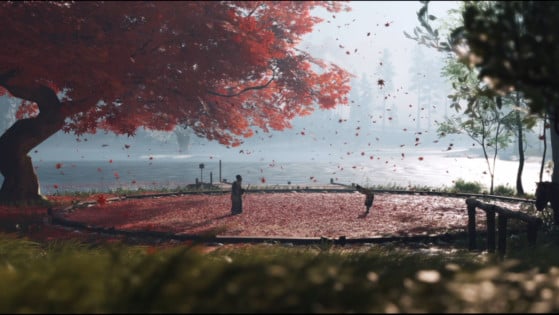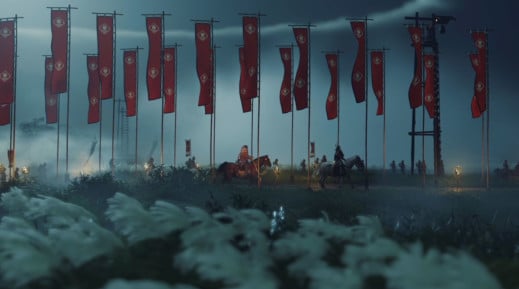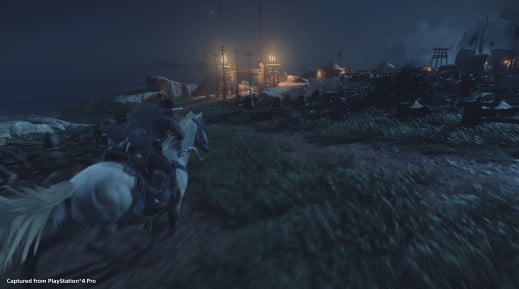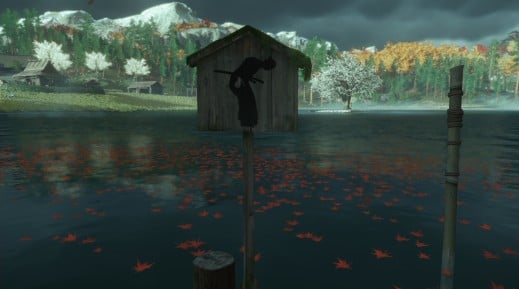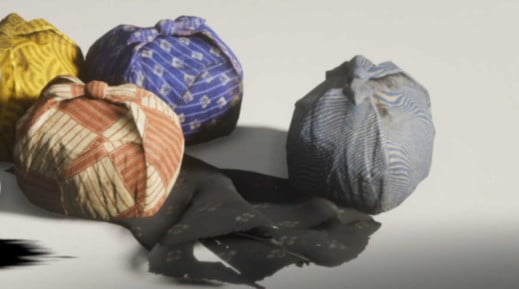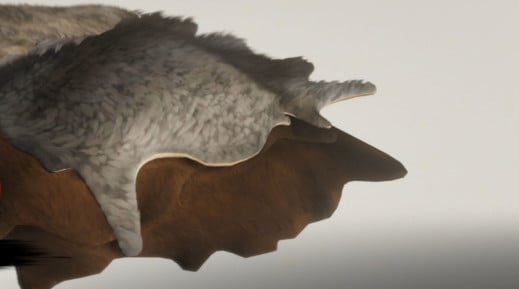We don't like to define a game by comparing it to other titles, but it's often the quickest and most effective way to offer a solid idea of what gameplay is like.
This is particularly true in the case of Ghost of Tsushima, with our repeated comparisons to Assassin's Creed and Sekiro: Shadows Die Twice. However, as we will see, it also has its own identity, and above all an incredible atmosphere.
Let's start with a little history lesson.
- Genre: Action-Adventure
- Release Date: July 17, 2020
- Platform: PlayStation 4
- Developer: Sucker Punch Productions
- Publisher: Sony Interactive Entertainment
- Price: $59.99 (Standard Edition)
- Tested on: PlayStation 4 Pro
Having conquered Russia in winter, as well as China, the Mongol Empire is particularly intimidating. With borders that reach Europe and the Middle East, it is the largest empire to have ever existed at this time.
The methods used during the conquests of Genghis Khan and his successors were brutal, and those who refuse to submit immediately are massacred without mercy.
When the Golden Horde decides to make Japan its next destination in 1274, they look to the small island of Tsushima. Strategically positioned between the Korean peninsula and mainland Japan, it is a perfect initial staging point for the invasion.
When the 80 samurai of the island face thousands of Mongolian soldiers, supported by the artillery of their fleet, the result is as expected.
Jin Sakai, one of the few survivors of the massacre, is confronted with a difficult choice.
One one hand there's bushido, the rigid code of honor of the samurai — and one which leaves him no chance of victory against a superior adversary in almost all areas.
On the other, the choice to defile his honor and use all methods at his disposal to defeat his enemy — even if it means becoming like them.
This dichotomy will haunt the protagonist throughout Ghost of Tsushima. Even if he does all this to save his uncle and mentor, it is seen as a betrayal in the eyes of the latter. The ambivalent relationship between Jin and his uncle, who has treated him like his own son since the death of his father, is an extra dimension to the story.
Our participation in this plot is also quite limited — it is absolutely not a game like The Witcher. While we are often given the choice between two answers or questions during dialogue, your input only rarely changes the result of a quest or story.
The moral debates and arguments used may seem archaic in the eyes of the modern public, but they are probably much more faithful to the customs of the time.
Tsushima departs from the anachronistic discourses on freedom and democracy that so many Hollywood films and certain games love to introduce.
If you are familiar with samurai movies and tales generally, then Tsushima should be familiar to you as well. It includes many references to films of the genre — in particular to those of Akira Kurosawa — to the point of offering a black-and-white game mode bearing its name.
The tone of the story is generally quite somber, and even pessimistic. The cruelty of the Mongol invaders is not surprising and is well documented, but it may lack a bit of nuance.
There is not one to redeem the other, and all the Mongols encountered are killers and torturers devoid of pity. Their leader and primary antagonist, Khotun Khan, quickly appears as a cunning and manipulative hypocrite, and just as brutal.
This is not to glorify the Japanese — the samurai are naive slaves at best who glorify a self-destructive code of conduct, and the rest of the populace has more than their share of bandits, murderers, traitors and slavers ready to collaborate with the enemy or take advantage of the misfortune of others.
Jin and his companions are far from paragons of virtue too, and they all have their moments of weakness and their share of darkness.
It is ironically a breath of fresh air compared to what you can often see, and it leads to some memorable scenes charged with emotion — but ultimately it won't be for everyone.
Once the introduction and the tutorial of the game have been completed — both of which are very well designed, mechanically and narratively — we are free to do what we want in the vastness of Tsushima, our only guiding principle being to save our uncle from the Mongols.
Divided into three vast regions linked to their respective acts, the island of Tsushima is of a quite satisfactory size, even if the final zone is a little empty and less visually impressive.
At the start, the beauty and the enchanting side of the location quickly catches the eye, without being fanciful or unrealistic.
It does this by reaching the limits of what one can find in the real world. This very relative realism also imbues it with so much charm, even if the real island of Tsushima doesn't combine a multitude of climates, nor an integral collection of the most photogenic landscapes in Japan.
Being able to gallop in flowery fields, engage in a duel under a deluge of maple leaves, or advance silently in the middle of a snowstorm is only a small part of the proposed experience. Once again, the absolute brutality of the Mongol invasion adds a terrible duality to the island.
It is a common experience to come across the bodies of charred women and children after having raved about the beauty of a bamboo forest. The Sucker Punch studio seems to have wanted to make the island more important than ever. Although you have at your disposal a map with points of interest, as in almost all Open World RPGs on the market, even the contours of the island are drowned in the fog of war. There is also no miraculous technique like climbing a building to magically reveal all the points of interest in an area.
Instead, the mountains allow you to observe the island for miles around and find your bearings, and in the middle of the mountains and sanctuaries, columns of smoke of aloi allow you to know where tragedies await your intervention. There are also no precise markers or GPS to guide you directly to a place. Instead, the wind will guide you. It's certainly a little more poetic again, even if the result is almost the same. The populace will also take care of pointing you towards the Mongolian camps and other places of interest. Finally, the local fauna is strangely collaborative, since the orioles as well as the foxes will guide you to sanctuaries and forgotten artifacts if you ever decide to follow them. All these natural elements that replace the usual interface and markers are not without appeal, in addition to having a certain sense in the context, even if one could have the impression of playing Princess Mononoke and not Jin Sakai at times . But if the artistic direction of the island could not be more successful, some textures are a bit poor, like the cliff sides during the climbing phases.
Overall the open world is full, and between the Mongolian camps, the very numerous points of interest, the patrols and the ambushes on the roads which make it possible to fight regularly, one never has the opportunity to be bored , especially since loading times are as rare as short. We still regret a certain variety in points of interest, although considerable efforts have been made to offer variety. Training on the pieces of bamboo requires a QTE, hot baths allow you to learn more about Jin's thoughts and his past, and the possibility of writing his own haikus to unlock cosmetics is well seen. However, that only delays the inevitable, and we are seriously tired of it in the second half of the game. The developers may have realized this, because the last act of the game is quite sorry, both visually and at the level of the elements to discover, which pushes us to rush towards the end of the story. That aside, traveling on horseback is very fluid and pleasant, it doesn't hang on anything, but without sending us flying in the air at the first opportunity.
Sekiro's Creed
As for the open world, Ghost of Tsushima was heavily inspired by different recent games for its gameplay, the last 2 Assassin's Creed in particular. You can roughly divide it in half. As a samurai, Jin Sakai is an honorable fighter whose place is on the battlefield, he confronts his enemies with the katana and the bow, which are the only two real weapons of the game (even if there are 2 bows different). The fights are intense, with their share of subtleties, without being too complex. Different fighting styles are unlocked by observing and killing Mongolian leaders, allowing adaptation to different types of enemies, while the basic style lends itself to duels and clashes of enemies with swords, the next breaks the guard of the shield users, then comes the one against the spears, etc. This may seem simplistic, since there is not really to think about it twice, it is always better to adopt the style that against the enemy of the moment. But when you face a dozen enemies at the same time, with all kinds of weapons, switching from one style to another on the fly requires a little more effort. Each style has its own breakwater attacks and its own bonus attacks. A thrusting attack, or a volley of blows, or even a kick kicked to propel an enemy away. There are many combinations and possibilities.
Besides, the enemies are not kidding, and Ghost of Tsushima clearly wanted to illustrate the dangerousness of weapons, both those of Jin Sakai and those of the Mongols. At the start of the game, our poor hero can be killed in just 2 or 3 shots, but the same goes for enemies. You will have to be at the cleat to parry the attacks and counter-attack, or dodge the unstoppable attacks, all under a deluge of arrows. The first hours of play are very difficult, since the slightest enemy combo will send you to the "loading" box. Sucker Punch was nevertheless very generous in this matter, since the automatic save points are very numerous, and the lost duels are simply relaunched with all your life. This compensates for the lack of estus vials and regeneration of life between fights, it will be necessary to use the determination gauge to heal, the latter only regenerating in combat.
The player can choose the playstyle, ultimately. Jin can behave like a real samurai and only face the Mongols head-on by starting a confrontation, a kind of mini duel which requires players react when the enemy initiates his attack, and which allows him to instantly kill and refuel.
However, it's a double-edged sword, since if the enemy pretends to be you, you end up at a hit point and on the ground — and the alert is sounded. If we add the fact that the Mongols love to take hostages, and even execute them (which is equivalent to a game over), we can say that the path of honor is thorny. At least at the start.
The camera does not help at all, sometimes being too low, often too close. It also has the annoying tendency to get stuck behind an obstacle, which will completely obscure the action. The decor and objects should become transparent when positioned between the camera and Jin or his opponents, but this functionality is sorely lacking.
This is why we quickly find ourselves making use of the capacity to assassinate enemies who have not spotted you, either with a stab in the back, or a plunging attack from a roof. From this point of view, the game is almost entirely similar to Assassin's Creed, with climbing, parkour, tall grass, distractions and a special view to spot the position of enemies out of sight.
This is not pushed very far, and it is impossible to hide the bodies or be content to spare enemies. It's an invading force which ruthlessly slays civilians — pacifism is out of the question. Some particularly vicious additional abilities are not spontaneous inspirations for Jin, they are unlocked with special stories, which are excellent by the way. The poisoned darts that can kill or drive enemies away are remarkably effective.
As he embarks on this path, Jin begins to be nicknamed "the ghost", and his methods end up instilling fear in the hearts of the Mongols.
The ghost paraphernalia is all the more formidable in combat — the possibility of sending a volley of kunai or a sticky bomb makes it easy to gain the upper hand during a melee. To that we can add the possibility of sniping enemies at long distance with heavy arrows, explosive arrows, and smoke bombs for a series of surprise assassinations.
Add in powerful equipment, passive bonuses via talismans, techniques to improve, and upgrading equipment, then once the first few hours have passed the difficulty curve plunges quickly. While defeating three base enemies was difficult at first, alerting a whole garrison and winning a 20 vs 1 battle is entirely doable later.
It's a shame considering the theme of the story, but it's often simpler and faster to just sound the alarm and take them on head-first. While Ghost of Tsushima avoids the misstep of recent Assassin's Creeds in implementing levels, you never find yourself facing enemies overpowered in an artificial way.
However, we regretted the absence of a system of enemy reinforcements, or even something equivalent to the system of Nemesis/Bounty Hunters in order to spice things up. Going from one Mongolian camp to another to openly zigzag everyone with impunity eventually becomes tiresome. You have so many tools at your disposal that death only comes from a gross error on your part at this point.
All things said, fighting remains technically difficult, and warding off all attacks is difficult. But the orientation is very different from that of Sekiro, for example, while at first glance fights have a lot in common. While in Sekiro you are forced to master assassinations and combat, and the use of tools is complementary in the majority of cases, here you can often content yourself with abusing your tools and some techniques to win.
Obviously, the developers must have realized this, because the duels come into play very quickly. Very heavily inspired by cinema once again, these fights are given an introduction and a very specific atmosphere each time. Adversaries gauge each other from a distance, prepare to draw their weapons, and reinforce their determination.
They act as boss fights, but you are not allowed to use your ghost tools and techniques here, presumably to preserve their difficulty. And they are basically difficult, so it is an opportunity for the combat system to shine.
We can then admire the parades, the characters who cross and who pass by, and we really get the impression of watching an old samurai flick. You have to react a quarter turn to counter, vary the attacks and their angle of approach, break the enemy's guard, and dodge the deadliest attacks before counterattacking.
If visually, and even sometimes emotionally, these duels are fantastic, in terms of gameplay they suffer from significant limitations. Being deprived of almost all of your arsenal is one thing, but the severely reduced lives of the participants also mean that they quickly come to an end.
At the start, it was with a knockout given to poor Jin on the ground, but we managed to gain victory fairly quickly — even if it was a stroke of luck. Since the bosses don't have much life and are quite easy to hit, and the backup system allows you to chain attempts almost without delay, you rarely seem to master a fight as in Sekiro.
Another major defect in duels is the lack of variety. There are the Mongol leaders on one side, who are all the same, and on the other the ronin and other swordsmen who differ only in two or three unstoppable attacks.
There are no assassins, horsemen or other adversaries who will force you to develop a precise strategy or learn the rhythm of their attacks. Brute force with the right equipment and the right techniques often open the way to an aggressive and expeditious resolution to half of the game.
